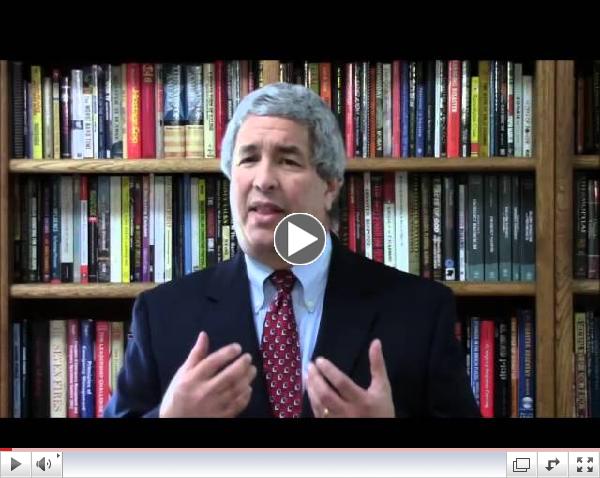|
Exploring Emergency Management & Homeland Security
|

Improv in Emergency Management
by Timothy (Tim) Riecker
In emergency management we put a lot of emphasis on planning and training, and rightfully so. Deliberate planning establishes a foundation for our actions, thought out well ahead of any incident or disaster we might deal with. Further, most training we receive is necessarily sterile. We are trained how to respond to, organize, and manage incidents and the various facets of them. To learn the elements and procedures being taught, we must first learn them in their most raw form, free of other distractions. We also know that in reality, our plans and training only get us so far.
I've recently been reading
American Dunkirk: The Waterborne Evacuation of Manhattan on 9/11 by James Kendra and Tricia Wachtendorf. This is an incredible book, the story of which I only knew small pieces of. It tells of boat operators and waterfront workers who supported the mass evacuation of people from Manhattan as well as the delivery of responders, equipment, relief supplies, and services proximate to ground zero. This book is well researched and supported by a multitude of interviews and other accounts of the heroism and actions taken following the attacks.
One of the themes that struck me early in the book was that of improvisation. For over a year now, I've been taking improv classes and doing some performances. We have an outstanding group of people and I've learned a lot, not only on the stage, but skills that I can apply across various aspects of my life, from work and podcasting to social situations. While I've always intuitively known that our emergency plans only get us so far and then we basically have to make things up, I never actually labeled it as 'improv'.
Kendra and Wachtendorf state "Since it is difficult to anticipate everything, communities need to be able to improvise as well as plan ahead." They further elaborate that "Theatrical improvisers exercise skills that allow them to perform skits and routines spontaneously. They are making things up as they go, but they know which principles to pull together. They know how to make use of props and cues and the environment closest to them. Instead of following a scripted plan, improv performers match what they know and what they have at hand." Consider this in the context of emergency management. Does it sound familiar? It certainly should.
___________________________________________
____________________________________________
Tim Reicker is a founding member, partner and principal consultant with Emergency Preparedness Solutions, LLC, a private consulting firm serving government, businesses, and not for profit organizations in various aspects of emergency and disaster preparedness.
|
|
Bernstein Crisis Management
|
 The 10 Biggest Mistakes in Crisis Communications The 10 Biggest Mistakes in Crisis Communications
By Erik Bernstein
(This month's column was written by Erik's father, Jonathan Bernstein)
All organizations are vulnerable to crises. Disasters, lawsuits, accusations of impropriety, sudden changes in ownership or management, and other volatile situations will happen. The threat of serious damage to people, property, reputation is real for virtually any organization, and many individuals as well.
The cheapest way to turn experience into future profits is to learn from others' mistakes. With that in mind, I hope that the following examples of inappropriate crisis communications policies, culled from real-life situations, will provide a tongue-in-cheek guide to the mistakes you must avoid when your organization is faced with a crisis.
If you want your crisis to quickly spiral out of control you should employ any combination of these wrong-way tactics:
- Play Ostrich. What Lance Armstrong did for years. Hope that no one learns about it. Cater to whoever is advising you to say nothing, do nothing. Assume you'll have time to react when and if necessary, with little or no preparation time. And while you're playing ostrich, with your head buried firmly in the sand, don't think about the part that's still hanging out.
- Only Start Work on a Potential Crisis Situation after It's Public. This is closely related to item 1, of course. Even if you have decided you won't play ostrich, you can still foster your developing crisis by deciding not to do any advance preparation. Before the situation becomes public, you still have some proactive options available. You could, for example, thrash out and even test some planned key messages, but that would probably mean that you will communicate promptly and credibly when the crisis breaks publicly, and you don't want to do that, do you? So, to allow your crisis to gain a strong foothold in the public's mind, make sure you address all issues from a defensive posture - something much easier to do when you don't plan ahead. Shoot from the hip, and give off the cuff, unrehearsed remarks.
- Let Your Reputation Speak for You. That worked out so well for the now-defunct Arthur Andersen, once one of the largest accounting firms in the world - before Enron.
______________________________________________
______________________________________________
Erik Bernstein is Vice President of Bernstein Crisis Management, a specialized firm dedicated to providing holistic strategies for managing crisis situations.
|
|
|
| PrepTalks: "The Big One" Podcast Team "Storytelling to Promote Action" |
One of the skills good speakers master is the ability to tell stories. The reason is simple: people are more inclined to remember stories than facts. A group of enterprising young reporters applied this concept to the task of encouraging people in Southern California to prepare for earthquakes. The results were surprising, with over 1 million downloads of the resulting podcast. This PrepTalk tells how they developed and implemented the concept and what the results were. |
The following are excerpts from my blog
Canton on Emergency Management. Please visit my blog to see the rest of my articles.
Killing the messenger supposedly went out of fashion years ago, yet in our stupidity we still attack the powerless representatives of major companies.
|

M
y Blogs
Follow Me
|
|

Welcome to the July edition of Emergency Management Solutions.
As I write this, many of my colleagues are still dealing with the aftermath of the this Sunday's shootings in Gilroy. It is a reminder that a crisis can occur at anytime, in the most unlikely of places and that we need to be ready to respond to events that we can't always foresee
.
This month is the 30th anniversary of the air crash in Sioux City, Iowa, a focusing event that changed the way we deal with airline disasters. It was remarkable for the fact that the emergency planners had prepared for the unlikely event of such a crash, despite resistance, and those preparations ultimately saved lives. We can't prepare for everything, but we can put in place plans and systems that give us flexibility in response.
Tim expands on this theme with some reflections on the importance of improvisation in response. My colleague Johnathan Bernstein, Erick's father, shares some of the poor crisis communications mistakes he's seen over the years.
Regards,
|
|
_
________________________________________________
The Strategic Plan
Getting The Most Out of Your Program
_________________________________________________
If I were to ask you if you have an emergency management program, what would you say? Most of the people I meet are quick to respond, "Well, of course!" However, the most common problem I find in both the public and private sectors is the lack of two basic pieces of program documentation: an administrative plan and a strategic plan. I suggest that without these two documents, you really don't have a program, just a collection of tasks and requirements.
The administrative plan documents the governance structure of your program. It describes the membership and authority of your advisory group or planning team, the source of your program funding, how often you meet, how you communicate, and how you make decisions. In short, it answers the question. "Who are we?"
The strategic plan documents what you are trying to accomplish with your program. As such it serves as an agreement among participants in the strategy, a tool to keep the program on track, and a yardstick to measure progress.
The strategic plan is without a doubt the most important component of your program. It should be the centerpiece of your program, not your operational plans. The strategic plan creates the context that allows operational plans to be effective.
______________________________
_______________________
________
If you are having trouble viewing my featured article, try clicking on the link at the top of the page. You can always find my articles in the white paper section of my blog site, Canton on Emergency Management.
|
|
Resources
FEMA Releases 2019 National Threat and Hazard Identification and Risk Assessment
The Federal Emergency Management Agency has released the latest
National Threat and Hazard Identification and Risk Assessment (THIRA). The National THIRA is the process through which FEMA identifies catastrophic threats and hazards, the consequences of those threats and hazards, and the capabilities the nation needs to address those hazards.
The 2019
National Threat and Hazard Identification and Risk Assessment (THIRA): Overview and Methodology is available on FEMA's website at
https://www.fema.gov/national-risk-and-capability-assessment. The document outlines FEMA's approach to that process, which uses the same standardized impact and target language that states, tribes, territories and members of the Urban Area Security Initiative grant program use for their THIRAs. For more information on the community THIRA, stakeholders are encouraged to consult the
Comprehensive Preparedness Guide 201, 3rd edition, which outlines the steps in this standardized approach.
FEMA designed the THIRA methodology to support collaboration between state and local governments, federal agencies, and other emergency management entities. Because the National THIRA process described in this document uses the same language as the community THIRA, FEMA and federal departments and agencies will be able to compare state, tribal, territorial, urban area and-eventually-federal and national preparedness estimates against the national-level assessment. This common assessment will allow FEMA and other federal agencies to track progress over time and provide concrete answers in specific, measurable terms to the question: "How prepared is the nation?"
___________________________________
Professional Development Opportunities
Nov. 15-20, 2019
Savannah, Georgia
The goal of the IAEM Annual Conference is to improve knowledge, competency level and collaborative skills. IAEM accomplishes this by attracting relevant high-profile speakers to address current topics and practical solutions.
|
|

Red Light To Starboard: Recalling the "Exxon Valdez" Disaster
This is a very personal story, viewing the effects of the Exxon Valdez disaster on the Alaskan fishing industry through the story of a local fisherman. At the same time, it contains a wealth of well researched detail on the response and on the lengthy recovery and court cases that followed.
Day has a personal stake: the main protagonist is her husband. But she is also an impartial reporter whose attention to detail makes it easy to follow the complex issues surrounding the disaster. One of the questions she answers is why the pipeline was located in such a sensitive ecological area in the first place, incredibly with the support of a large part of the population of Valdez. She covers the broken promises of Exxon and the Aleyska Corporation and their influence on the state government.
The book is not an expose; rather it is a simple chronology of fact, supported by reference to government reports, news articles, and court transcripts. Most importantly, it demonstrates the long term impact disasters can have on both the environment and the people involved.

______________________________________
|
Emergency Management: Concepts and Strategies for Effective Programs
Second Edition
AVAILABLE NOW!
|
|
Need a speaker for your next conference? I offer keynotes, seminars and workshops.
 |
|
Three Reasons Why I'm the Right Speaker for Your Conference
|
|
|
Speaking Engagements
Disasters-Natural and Man-Made: Strategies on How to Train Workers to Stay Safe and How to Keep Your Business Running
S
eptember 19, 2019, 10:30 AM Pacific
Managing Crisis: Why Some Succeed and Others Fail
October 7, 2019, 12 PM Pacific
Learning From The Past: What We Remember, What We Forget
November 19, 2019
Savannah, GA
|
|
| |
|